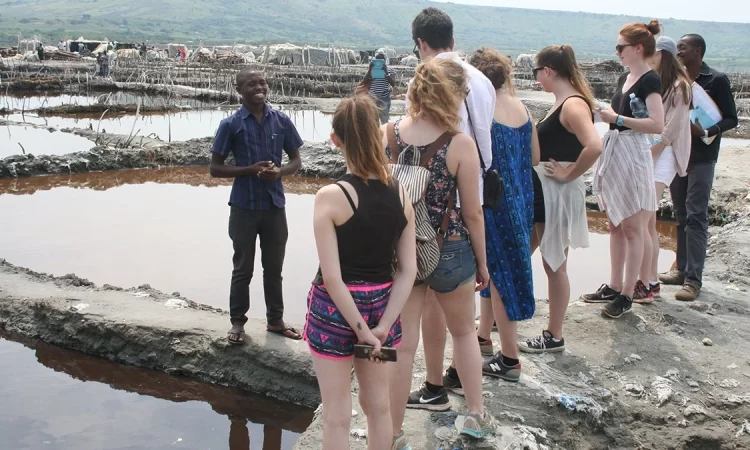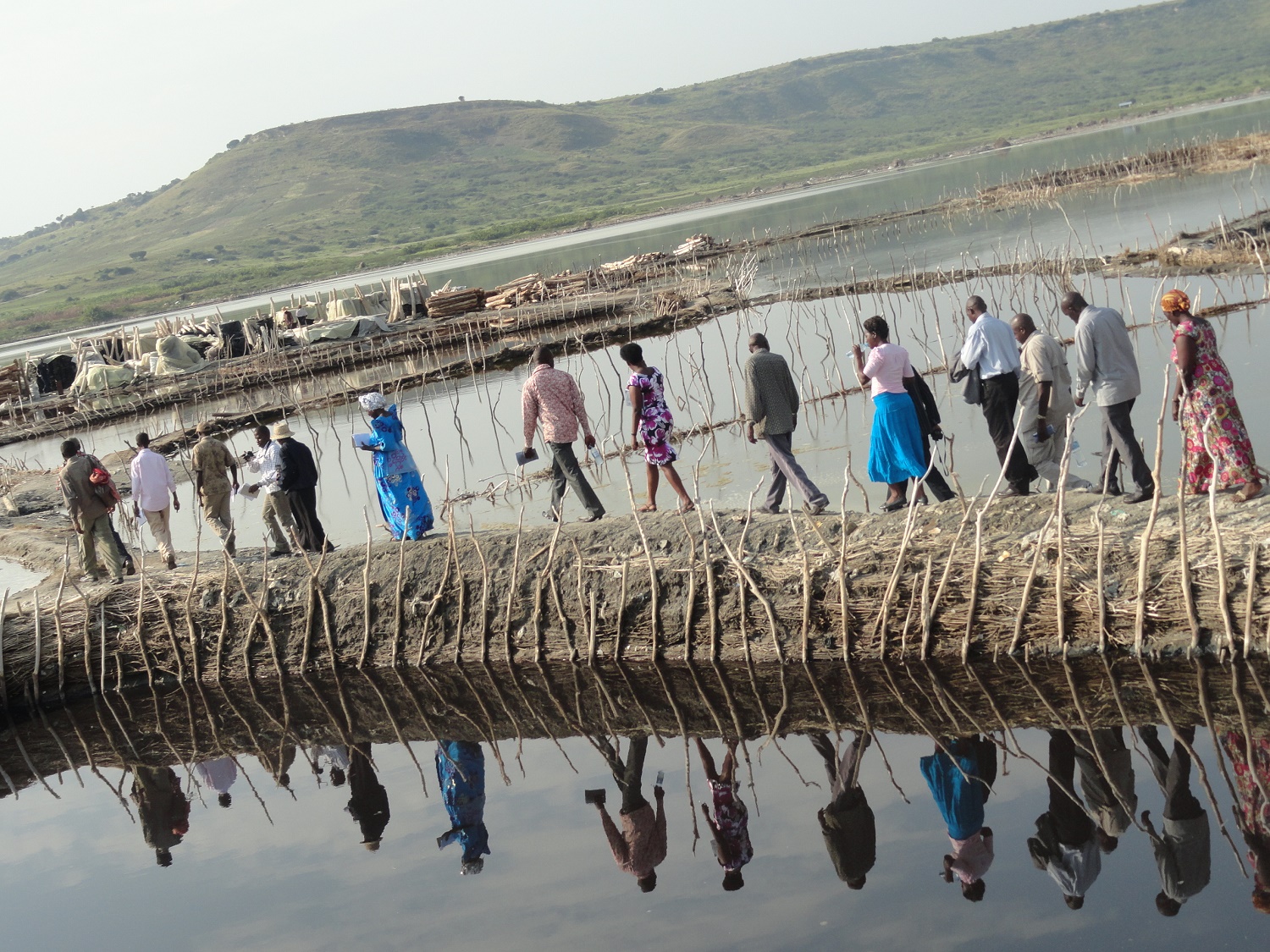Salt mining at Katwe salt mines

Salt mining at Katwe salt mines : Salt mining is among the activities that take place at the Katwe Salt Mines which are found in Queen Elizabeth national park.
The salt mines are among the places to visit to get to know more about the traditional salt mining process during tours around Queen Elizabeth National Park which is a popular safari destination located in south western Uganda in the district of Kasese.
The tours to the Katwe salt mines during safaris involve visiting the salt mines with a local guide who provided information about the salt mining process. There are also local craft shops near the salt lake where tourists can see and purchase local arts and crafts and also interact with the locals and get to know about their way of life.
Tourists also enjoy bird watching and wildlife viewing during tours around the Katwe salt mine area where birds such as flamingos can be seen. Wildlife species like antelopes can also be seen around the savannah plains.
Process of salt mining on Lake Katwe
Lake Katwe is among the crater lakes found around Queen Elizabeth national park. The lake was formed as a result of volcanic activity and it is a salty lake because there are many inlets of the lake but there are no outlets.
The source of income for many of the locals living around the Katwe salt mines is salt mining. The areas of Katunguru and Katwe are the places where locals engaging in salt mining live.
The salt rocks in Lake Katwe are formed around the lake as a result of evaporation which occurs during the dry season. The lake which is an explosion crater is the place where many locals living in the Katwe area take part in salt mining.

Salt in Lake Katwe goes through different processes before the final product. During the salt mining process, the lake is divided into small ponds and then using local methods, the locals extract the salt from the lake and dry it.
There are wooden walkways which are used by the locals during the process of salt mining at the Katwe salt mines.
The small ponds which are partitioned on Lake Katwe are owned by different individuals. To extract the salt from the ponds, the locals use their hands. The types of salt which are got from Katwe salt mines include crude salt and unwashed salt.
Traditional methods are used by the males and females during the salt extraction process from Lake Katwe. During tours around Kasese, tourists can interact with the miners and get to know how they do salt mining. The men get salt blocks from the bottom of the lake to the shallow ends and wooden boards are used to transport the rock salt from the lake.
During the process of collection of the salt from Lake Katwe, the salt water is directed to the salt pans created by the locals. The formation of the salt in the salt pans takes time and the process is monitored by the owners of the salt pans.
When a crust of salt is formed on the top of the salt pan, it is collected and washed to become clear using water from the lake and this product goes through a filtration process to get crystallized salt which is also known as table salt. This process is mostly done by the local women while the men shovel the salt blocks from the lake during the extraction process.
The products got from the Katwe salt mines including rock salt is sold to farmers in the neighboring villages who use it for purposes such as adding it to the feeds of the cows and this type of salt is also used to make food such as meat and beans soft during food preparation.
Other forms of salt got from the Katwe salt mines is used for manufacturing of soap and fertilizers and also for dying of materials in textile industries. The locals benefit by selling the salt to earn a living and through tourism around their community, they also get some income to survive.
Best time for salt mining in Lake Katwe
The dry season is considered the best time to engage in salt mining because of evaporation which makes the salt water to become concentrated forming salt.
The months of the dry season include January, February, June, July, August and September which are the best months for salt mining in Lake Katwe. The dry season is also a good time to see wildlife species during safaris around Queen Elizabeth national park especially around the water sources.
Other activities to do in Queen Elizabeth national park
Tours around the Katwe salt mines is visiting Queen Elizabeth national park where tourists can engage in activities such as morning and afternoon game drives, boat rides on the Kazinga channel, bird watching, chimpanzee tracking, Lion tracking, guided nature walks, community tours in the fishing villages among other activities.
Morning and afternoon game drives around Queen Elizabeth national park involves the search of different wildlife species such as elephants, lions, leopards, buffalos, impalas, waterbucks, hartebeests, Uganda kobs, bushbucks, warthogs, hyenas among others. When exploring parts of the national park during game drives, tourists can explore areas such as the Kasenyi plains, the Mweya peninsular and also the Ishasha sector which is known for being home to tree climbing lions.
Tourists can also engage in boat rides on the Kazinga channel (where Lake Edward and Lake George meet) when visiting Queen Elizabeth national park. During this activity, wildlife species such as elephants, buffalos, hippos and also Nile crocodiles and various bird species can be seen by the water shores. Boat tours can be done in the morning and also in the afternoon during safaris around the destination.
Chimpanzee tracking around Queen Elizabeth national park takes place in the Kyambura gorge where tourists can observe the chimpanzees and spend time with the chimpanzees in their natural habitat which can be done in the morning or the afternoon.


